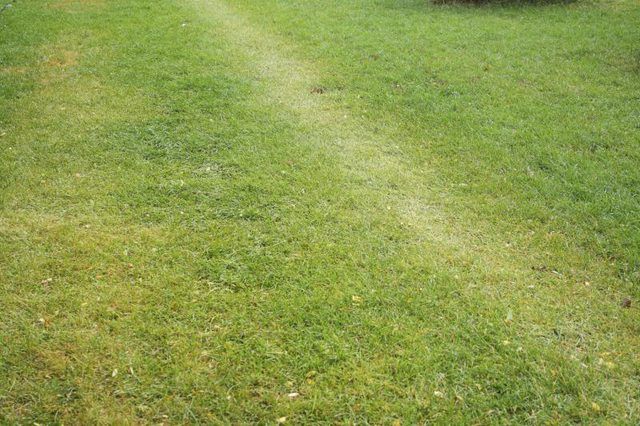Bulbs
Flower Basics
Flower Beds & Specialty Gardens
Flower Garden
Garden Furniture
Garden Gnomes
Garden Seeds
Garden Sheds
Garden Statues
Garden Tools & Supplies
Gardening Basics
Green & Organic
Groundcovers & Vines
Growing Annuals
Growing Basil
Growing Beans
Growing Berries
Growing Blueberries
Growing Cactus
Growing Corn
Growing Cotton
Growing Edibles
Growing Flowers
Growing Garlic
Growing Grapes
Growing Grass
Growing Herbs
Growing Jasmine
Growing Mint
Growing Mushrooms
Orchids
Growing Peanuts
Growing Perennials
Growing Plants
Growing Rosemary
Growing Roses
Growing Strawberries
Growing Sunflowers
Growing Thyme
Growing Tomatoes
Growing Tulips
Growing Vegetables
Herb Basics
Herb Garden
Indoor Growing
Landscaping Basics
Landscaping Patios
Landscaping Plants
Landscaping Shrubs
Landscaping Trees
Landscaping Walks & Pathways
Lawn Basics
Lawn Maintenance
Lawn Mowers
Lawn Ornaments
Lawn Planting
Lawn Tools
Outdoor Growing
Overall Landscape Planning
Pests, Weeds & Problems
Plant Basics
Rock Garden
Rose Garden
Shrubs
Soil
Specialty Gardens
Trees
Vegetable Garden
Yard Maintenance
How to Identify Lawn Fungus
How to Identify Lawn Fungus. Maintaining a healthy lawn can sometimes be a challenge -- whether it's high temperatures, heavy moisture or poor mowing habits, plenty of factors can affect the health of your grass. But fungal diseases can be the most frustrating because they usually cause unsightly damage such as brown spots or slimy rings -- and...

Maintaining a healthy lawn can sometimes be a challenge -- whether it's high temperatures, heavy moisture or poor mowing habits, plenty of factors can affect the health of your grass. But fungal diseases can be the most frustrating because they usually cause unsightly damage such as brown spots or slimy rings -- and getting rid of a lawn fungus is difficult if you don't know which one is affecting your lawn. You can narrow down the possibilities, though, if you consider a few key factors that help with the identification.
Consider Grass Type
Some lawn fungi only affect certain types of grass, so you can often narrow down the possible options according to the grass species. Warm season grasses such as Bermudagrass (Cynodon dactylon), hardy in U.S. Department of Agriculture hardiness zones 7 through 10, zoysiagrass (Zoysia japonica), hardy in USDA zones 6 through 9, centipedegrass (Eremochloa ophiuroides), hardy in USDA zones 7 through 8, and St. Augustinegrass (Stenotaphrum secundatum), hardy in USDA zones 8 through 10 are more likely to develop fungal diseases when temperatures are cooler than normal. Cool weather grasses, including Kentucky bluegrass (Poa pratensis), tall fescue (Festuca arundinacea) and fine fescue (Festuca species), all hardy in USDA zones 2 through 7, and perennial ryegrass (Lolium perenne), hardy in USDA zone 1 through 7, typically experience fungal infection when the weather is warmer than normal. Brown patch, a disease caused by the Rhizoctonia fungus, attacks many types of grass, but most commonly, Bermuda, centipede, St. Augustine, Kentucky bluegrass and ryegrass. Dollar spot is more likely to affect Bermuda, ryegrass, fescue and bluegrass. Fusarium blight usually affects only bluegrass, while red thread can occur in ryegrass, bluegrass and fescue.
Consider Stresses
Certain stresses can make a lawn more susceptible to fungal disease. In particular, weather conditions play a factor. Brown patch spreads more rapidly in the summer when grasses are subjected to high humidity and temperatures above 80 degrees Fahrenheit. Dollar spot grows rapidly when a lawn is low on moisture due to infrequent watering. Low nitrogen levels can also contribute to the spread of the fungus, which may occur when the wrong fertilizer is used. Fusarium blight spreads quickly when the weather is hot and the lawn is dry. In general, a lawn is more prone to fungal disease if itís been cut too low, overwatered or the soil beneath it is compacted.
Look for Symtpoms
Brown patch produces circular sections of dead grass that vary in size from small to large. The outer portion of the circle is often grayish in color and the circles may appear sunken over all. Grass leaves can easily be pulled from the stem, too. When dollar spot is present, silver dollar-sized spots of brown discoloration appear throughout the lawn. In some areas, the spots may merge into a larger section. Fusarium blight usually causes the grass to begin to change color, going from light green all the way to tan before it dies. Other symptoms that may indicate the lawn suffers from a fungal disease include thin patches of frayed blades; red, orange, purple, black or gray spots on grass blades; pink, gray or black powdery coatings on grass; and slimy, dark sections of grass.
Get Help
Even if you can narrow down the type of fungus that may be affecting the lawn, you may not be able to identify the specific one. The local cooperative extension office can often help identify fungi that are common in the area. You can also cut a few blades of the affected grass and take them to a local garden center to ask for help in identifying the fungus.